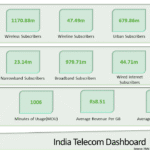The target segment of Luxe segment (more than Rs 50,000) smartphones has been able to save on some of their routine expenses like travel and entertainment and is now fueling their ultra-luxury buying, which is a good indicator for brands like Apple, Samsung and OnePlus in this category.
Wealth-X, a global specialised research group tracking the world’s wealthiest people has recently come up with an interesting insight. As per the report it says, for the first time in the history of mankind, we have more than 3,000 billionaires worldwide in 2020, which is a 13.4% growth over the previous year.
This is a year when we all faced one of the most surprising challenge of our lives – Covid-19 pandemic that brought the entire world to a standstill. We are still looking at how to live in this new world! The numbers aren’t surprising as most of these billionaires are fueled by the stupendous growth of technology, especially digital. The fact remains that out of world’s top 10 billionaires, 7 are from technology domain.
Back home in India, the things aren’t different anyway. While a lot many casual and marginal workers lost their jobs, as well as in the organised sector and there were pay cuts, people earning more than Rs 50 Lakh a year did not see much of an impact on their incomes. In fact many of them did get extra income due to special incentives announced to keep up with the challenging times.
Similarly, the startup funding growth continued at its pace. We saw a few more unicorns rising during the period and now the incumbent startups are up for an IPO. When I interact with this social segment the theme I get is there are additional savings owing to cuts on travel, entertainment, shopping and other ‘lifestyle’ expenses which got curbed due to mostly remaining restricted in homes for over a year now.
Whether the economic disparity is increasing or balancing out, we need to do more empirical study to conclude something with credibility, but one this is for sure that the ‘super-earners’ have saved during this period, more than their average annual savings. As the confidence towards a normal lifestyle is increasing and people feeling protected and secure after vaccination and other measures, the spending sentiments are also changing. Just yesterday Lamborghini announced delivering its 300th ultra-luxury car in India in 2021. This year itself, it sold 100th Urus SUV in India. Also, the luxury home buying has picked up in metro areas like Gurugram, Noida and elsewhere as per some friends in the realty sector.
For the smartphone brands operating in the Luxe segment (above Rs 50,000) this is a good sign. Especially for brands like Apple, Samsung and OnePlus which have established themselves in this zone. Apple has already launched its newest iPhone 13 series along with other product categories, while Samsung also recently launched Fold and Flip 3 editions. OnePlus 9 series was launched earlier this year. Then there are other brands also in the zone including Google, Mi, OPPO and Vivo. But these are ‘fringe’ brands in terms of the hold they have on the market in Luxe segment.
Of all these luxury smartphone brands, Apple seems to be gaining the most as it has the latest and widest range of iPhones to offer in this segment. Samsung has the unique fold form factor to offer which now in its 3rd generation is reinforcing to use. OnePlus doesn’t have a latest model to offer at the moment, though there are some media reports about T variant launch of its R series (confusing ;), well its like that).
With the luxury purchases going up across sectors, the luxe segment in smartphones is also going to get benefited. The upcoming sales festive quarter could be the trigger point for this trend where finally the segment starts growing beyond 2% of the annual sales by volume. As someone watching this industry for over a decade, its a good sign to see all segments finally growing to their potential, but the challenge still remains in expanding the smartphone base in India which cannot happen till we have a suitable answer in the entry level (less than Rs 5,000). Lets hope JioPhoneNext stirs a new thought in this space in a decade when India should aspire to cross 1 billion smartphone users.





